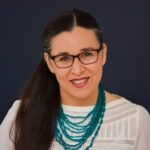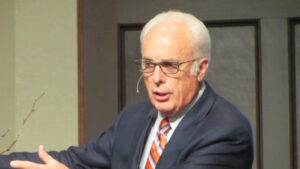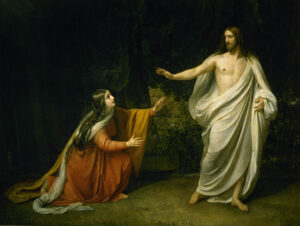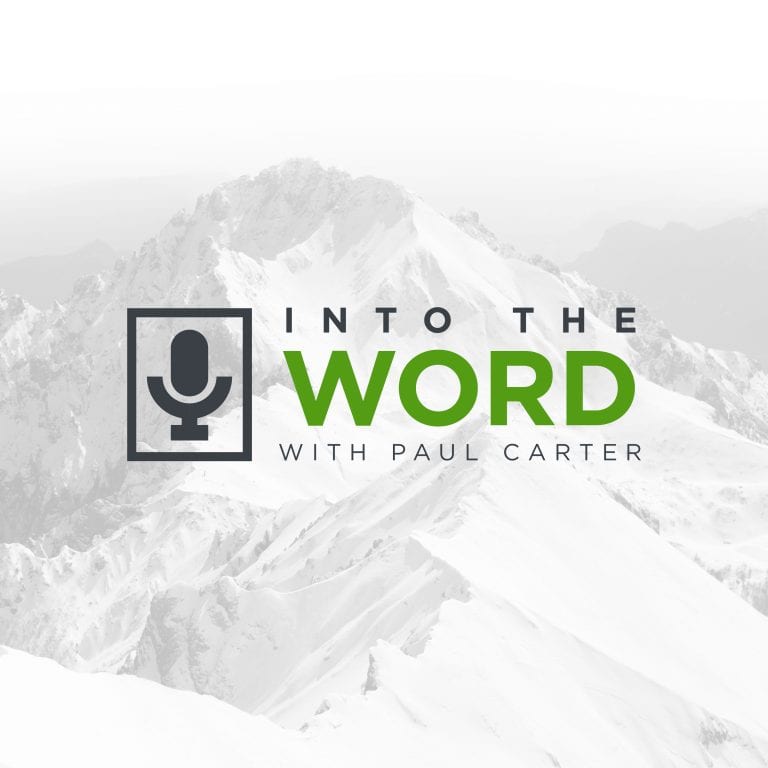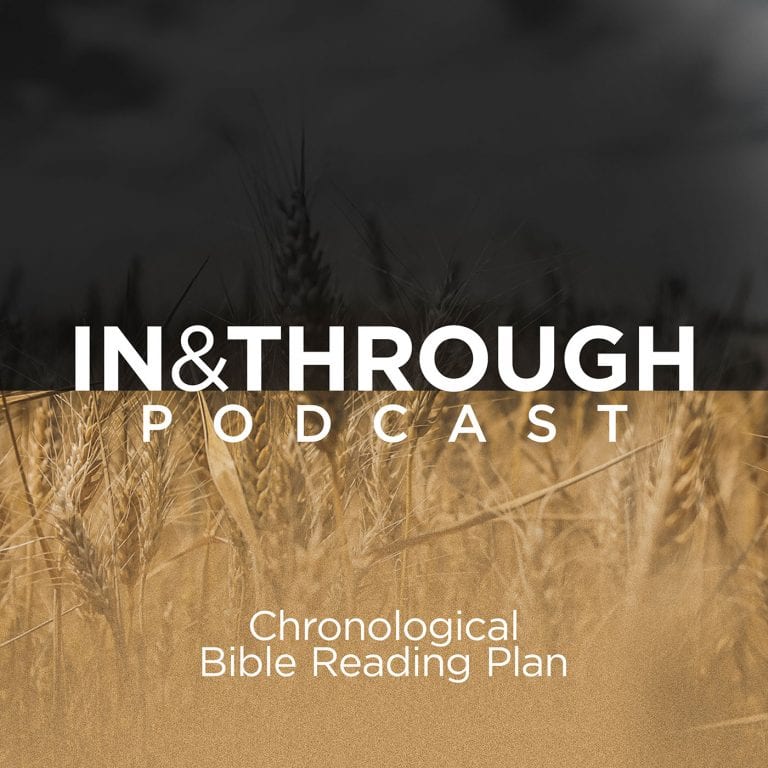After hearing historian Alan Hayes speak about Christianity and Indigenous peoples in Canada, I (Wyatt) asked him if he would be willing to provide an historical overview for The Gospel Coalition Canada. He kindly agreed. I hope this short overview provides some historical context to help all of us understand how Christianity and Indigenous peoples have related to one another over the centuries in Canada.
In the 2011 Canadian census, which is the most recent one to give us information on religion, 63% of Indigenous respondents self-identified as Christian, compared to 67% of non-Indigenous respondents. Most Indigenous people identified as Roman Catholics; the next largest groupings were, in order, Anglican, United Church, and Pentecostal.
While it’s true that “census Christians” don’t necessarily attend worship services regularly, if at all, the statistic suggests at least that most Indigenous people take a positive view of Jesus.
And it’s not just that a lot of Indigenous individuals are Christian. For several Indigenous nations, Christianity has developed as an essential cultural element. The Métis and the Mi’kmaq nations as a whole, for example, have Roman Catholic traditions; the Gwich’in have been Anglican. Over 93% of the population of Nunavut identifies as Christian.
Nor is the Indigenous connection with Christianity simply a holdover from past ages. Over the past several decades, Pentecostalism has established itself strongly in dozens of communities across “Turtle Island.”
These high numbers may be surprising, given that many Indigenous leaders and others identify Christianity as a historically repressive instrument of the settler colonialism that removed Indigenous peoples from their homelands, denied them civil rights, and sought to suppress their culture. Most notably, some denominations ran Indian residential schools where Indigenous children were mistreated or abused, and were taught to despise their own people.
Nevertheless, many residential school survivors continued to value the gospel of Jesus even if the folks who had taught it to them left much to be desired.
No simple explanations
How did Christianity gain traction among Indigenous peoples?
There have been many “grand explanations.” On the positive side, the classic Christian explanation has been that seeds were planted by patient, adventurous, self-sacrificing, hard-working missionaries. On the negative side, Christianity has been criticized as a false consciousness induced among Indigenous peoples by the cultural hegemony of the colonizers. Or, indeed, some suppose that Christian ideas were directly imposed on Indigenous peoples by force.
The history of Indigenous–Christian encounter in Canada is varied and complex. It covers over five centuries of time and several million square kilometres of geographically varied space.
There could be elements of truth in all these explanations, but I don’t think we can find any one single through-line narrative. The history of Indigenous–Christian encounter in Canada is varied and complex. It covers over five centuries of time and several million square kilometres of geographically varied space. It involves dozens of distinct Indigenous national identities and numerous European national identities and a variety of Christian traditions. It involves an untold number of people with quite different personalities and characters.
So at different times and different places, among different Indigenous groups and different individuals, Christianity has played many different roles.
Two caveats
In one way it’s obvious, but it’s also easy to forget, that Jesus and the apostles weren’t European, and the Bible doesn’t bless European culture. Unfortunately, Christianity was often presented to Indigenous peoples in Canada as if it were indeed welded to French or British assumptions and cultures. Indigenous converts were often expected to adopt European names, dress like Europeans, speak like Europeans, sing like Europeans, and submit to superior European wisdom.
Confusing faith with culture often arises from failing to read the Bible through Biblical eyes.
I’m using the past tense here, but I find that, still today, many Euro-Canadian Christians assume that God blesses their cultural values. Confusing faith with culture often arises from failing to read the Bible through Biblical eyes.
Similarly, it’s tempting to tell the story of Indigenous Christianity as if it were a part of European mission history — as if missionaries proposed Christianity, and Indigenous peoples responded. But just as it’s the rare congregation where every single person understands and lives the Christian faith in exactly the same way as the pastor, so, too, did Indigenous peoples seek to meet Jesus in their own way.
A general historical skeleton
Since Indigenous life in Canada has been profoundly influenced by Euro-Canadian systems and powers, I find it useful to set Indigenous Christian history in the context of three main periods of Indigenous-settler relationships.
The first period
The first period is European commercial and imperial penetration, which in eastern Canada is represented most notably by New France and Acadia until 1758–1763, and in western Canada by the Hudson’s Bay Company well into the nineteenth century. Europeans were vastly outnumbered, and there was no question of their seizing the lands of Indigenous peoples or telling them what to do. On the contrary, Europeans depended on Indigenous peoples for environmental knowledge and survival, commerce and trade (notably fur), military alliances, and often friendship and marriage.
In New France and Acadia, French missionaries, both male and female, were sent by Roman Catholic religious orders to bring the gospel to First Nations peoples.
They tried different models of evangelism.
For example, one priest went on a winter hunting expedition with an Indigenous group, hoping to have informal conversations with them. But he might have made a better impression had he been a better hunter.
Some missionaries set up outposts in Indigenous communities. The best known, though it was short-lived (1634–1655), was the Jesuit mission south of Lake Huron. The Jesuit reports from Huronia, which are truly engaging, show that the missionaries worked hard to build up lay leadership.
Another idea was to establish communities of Indigenous converts. “The Mohawk saint,” Kateri Tekakwitha (d. 1680), lived in one of these.
Another experiment was Indian residential schools for kids.
One fond hope was that if French men married Indigenous women, their families would become Catholic and raise their children accordingly. The usual result, however, wasn’t French Catholic families, but métis families with a creatively hybrid spirituality.
Christianity divided many Indigenous communities, but it gained wide allegiance in others.
The second period
The second period, which begins after the American Revolution in eastern Canada, after the 1858 gold rush in British Columbia, and after the Manitoba Act of 1870 in the prairie provinces, is marked by large influxes of settler immigration, soon outnumbering the Indigenous population.
Encounter generated curiosity on all sides. Indigenous peoples wanted to understand the interlopers and perhaps draw on their wisdom. For their part, Christian churches felt a burden to share the gospel of salvation in Christ.
Now, God didn’t depend on Euro-Canadian Christians for the conversion of Indigenous peoples. A visitor to Acadia in 1699 found Mi’kmaq who prayed the rosary, baptized new Christians, and thanked Jesus for their food, but had no connections with any priest. Some Tsimshian people in British Columbia apparently first heard about Christianity from Mohawk converts from Ontario. Some early twentieth-century Christian revivals in the Arctic were initiated by Inuit leaders, unknown to the missionaries.
And in most Indigenous communities, the principal instruments of the Gospel were Indigenous evangelists, catechists, preachers, and pastors. Some Indigenous Christian leaders had denominational appointments, such as Kahkewāquonāby (Peter Jones), an Ojibwe and Welsh Methodist in southern Ontario from the 1830s to the 1850s; Sakachuwescumin (Henry Budd), a Cree Anglican in Manitoba from the 1850s to the 1870s; and Robert McDonald, Ojibwe and Scots, who worked effectively among the Gwich’in from the 1860s to the early 1900s.
Other Indigenous Christian leaders worked independently, such as the Tsimshian Arthur Wellington Clah in the later nineteenth century, and Armand Tagoona, who founded the first independent Inuit church in the 1960s. Even in Indigenous communities that did have a resident Euro-Canadian missionary, a lot of the heavy lifting was done by Indigenous catechists.
The first generation or two after contact is an exciting period to read about. It could be a creative period when many Indigenous people embraced Jesus not as an Englishman or a Frenchman but as the lord of the nations. Theologically we can believe that God prepared Indigenous cultures for Jesus, just as the church fathers believed that God had prepared the Roman Empire for Jesus. The missiologist Lamin Sanneh once wrote, “It is a striking feature of Christianity’s expansion that it seldom arrived as a surprise.”
But there could also be a nastier, coercive element in Indigenous–Christian encounter, as settler governments decided to remove Indigenous peoples to make room for settlers, and began to look for solutions to “the Indian problem”. Then, typically, the churches became complicit.
In Ontario and the North West, removal usually took place according to treaties that were negotiated between the Canadian government and Indigenous groupings. This process that had been established by King George III in a royal proclamation of 1763. Notoriously, many of the treaties were dishonourably negotiated and, once signed, were usually ignored at least in part.
In British Columbia, however, there were virtually no treaties. The province denied the authority of the Royal Proclamation of 1763, and simply removed Indigenous peoples from their lands at will.
The treaties moved First Nations communities to reserves, where they came under the authority of the federal Indian Act and its various commissioners and agents. First Nations people functioned as wards of the Crown without civil rights or self-determination, and under rigid constraints on their ability to sell goods, travel, or make a living.
The standard solution of the “Indian problem” was a strategy of assimilation, requiring First Peoples to be “civilized and Christianized.” Whatever gospel motivation many missionaries may have had to save souls, they therefore almost inevitably functioned as instruments of government colonial policy. In fact, many missionaries took advantage of state power to bring Indigenous people into their churches and to suppress their native ceremonies, traditions, and spiritualities.
What has become the best known strategy of Indigenous assimilation by the churches was the Indian residential school. From the 1880s to the 1960s, the Roman Catholics, Anglicans, Methodists (later the United Church of Canada), and the Presbyterians, as well as some Moravians and Baptists, ran schools that removed Indigenous children from their families, sometimes for their entire childhood, and aimed to reshape them as English- or French-speaking Euro-Canadians.
That said, there were also many Euro-Canadian Christian allies who valued Indigenous traditions, and supported Indigenous land claims and civil rights. One example is Arthur O’Meara, an Anglican priest who was also a lawyer. After British Columbia denied the existence of Aboriginal land title in 1910, he spent the rest of his life passionately fighting for Nisga’a land claims. He was unsuccessful during his lifetime, but his legal arguments finally led the Supreme Court of Canada, in the Calder case of 1973, to recognize Aboriginal rights predating Canadian law.
The third period
The third period of Canadian colonialism, since the 1960s, has been characterized by efforts towards reconciliation.
The 1960s were a watershed for many reasons: civil rights movements, Canadian stock-taking at the centennial of Confederation, the Indian pavilion at Expo ’67 in Montreal, a government study called the Hawthorn Report, and widespread reaction against a super-colonial “White Paper” of the Trudeau government in 1969.
Many churches began questioning their paternalistic approach towards Indigenous peoples. As a result, they began to promote and support Indigenous Christian leadership in roles of evangelism, teaching, pastoral care, ordained ministry, and oversight. Pentecostals established dozens of native churches, an Aboriginal Bible Academy, and the National Native Leadership Council in the 1980s (whose work was later folded into the denomination’s missions department). The United and Anglican churches created Indigenous ecclesiastical jurisdictions with Indigenous leadership.
Some settler churches demonstrated their commitment to justice by joining in an ecumenical coalition called Project North in the 1970s, which helped protect the Dene of the Northwest Territories from oil pipeline developments.
Beginning in the 1980s Protestant churches and Roman Catholic religious orders offered apologies for their management of Indian residential schools. Many of these churches, and others such as the Salvation Army, developed resources for Indigenous healing and social services. Pentecostals had run no residential schools, but in 2012 they apologized for their damaging attitudes and other failures, and established a path towards reconciliation.
Some churches support a movement towards a self-determining Indigenous Christian church in Canada, like the Maori church of Aotearoa, in New Zealand.
Some issues today
Reflexively, many people in Canada, both Indigenous and non-Indigenous, think of Christianity as a western religion. As a result, many Indigenous Christians can feel as if they don’t quite belong in the standard Christian churches, where Euro-Canadian values dominate, and Indigenous values can appear exotic and unwelcome. And they can also feel shamed in their own Indigenous communities for identifying with a religion with a strongly colonial history and identity.
In a global perspective, of course, Christianity isn’t a “white” religion. About 60% of the world’s Christians live in the global south — and that doesn’t include Mexico, which has 5% of the world’s Christian population. But in Canada, culturally diverse though it is, the Christian churches still have a predominantly white public face, and still often channel Eurocentric social values and assumptions. This strong association between the gospel and the dominant culture may be the single greatest barrier to the flourishing of an Indigenous Christianity in Canada.


